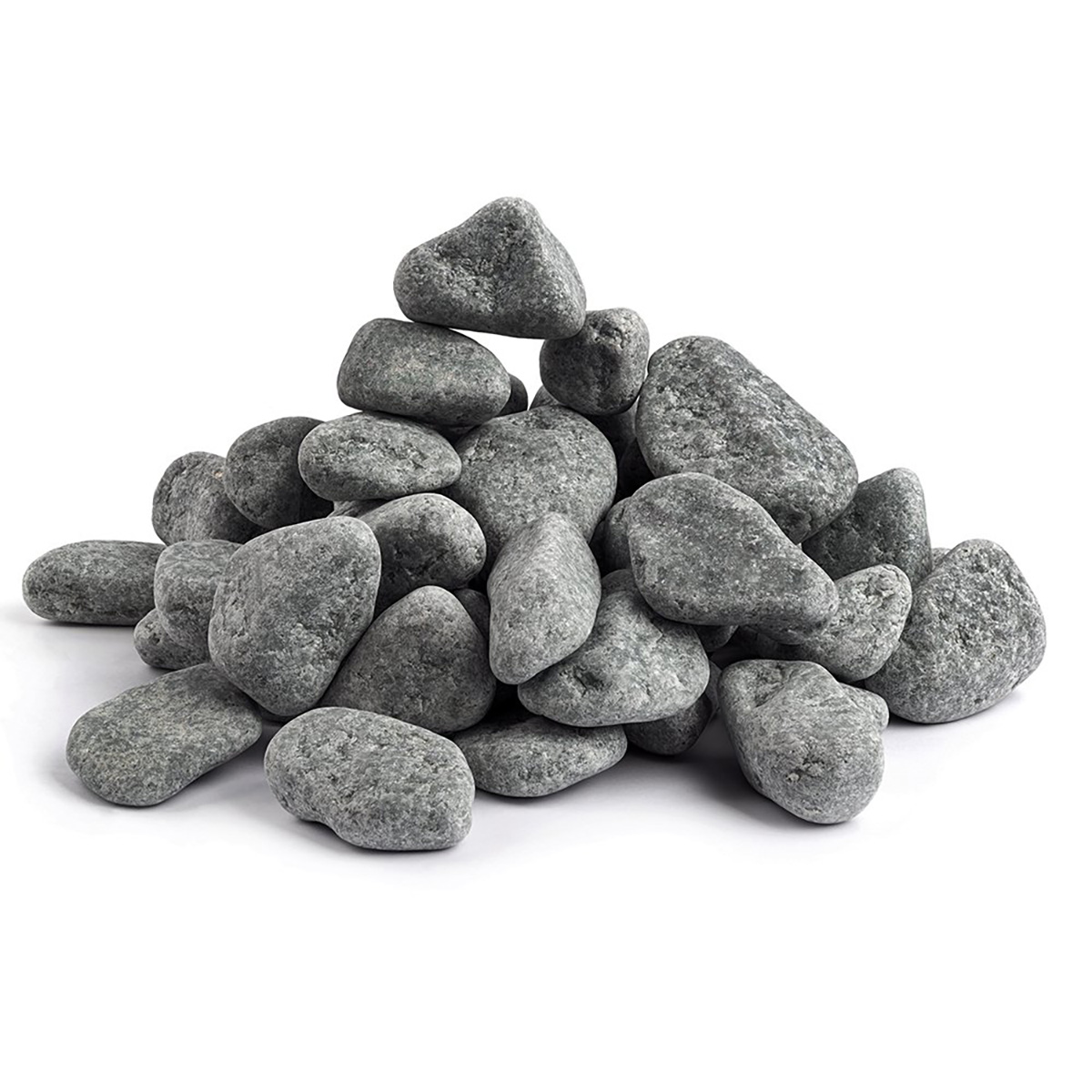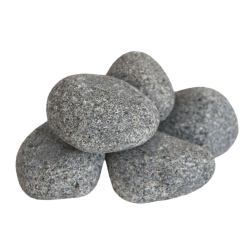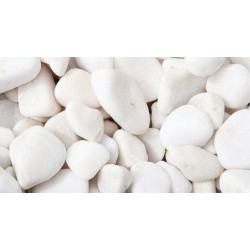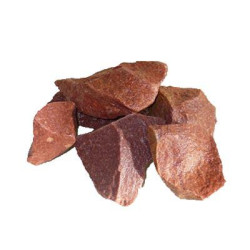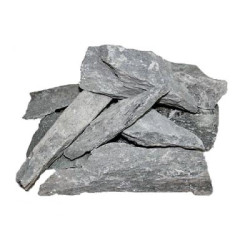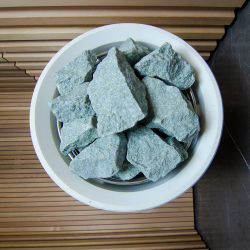The stone in the steam room heater "produces" steam from the water poured over it. For this, the stone must be heated (280-600 degrees). Generally, there are two methods of stone heating in heaters:
• Direct heating - when the stones are heated by the flame and smoke of a burning fire.
• Indirect heating - when the stones heat up from the metal body of the heater or electric heating elements.
The shape, size and type of stone used depends on the method of heating the stone. Metal heaters heat the stones in the planes of the body, so the stones should be placed in no more than two layers from the heated surface. The stones should be large - about the size of a fist (10-15 cm). They heat up well from metal, accumulate enough heat for steam.
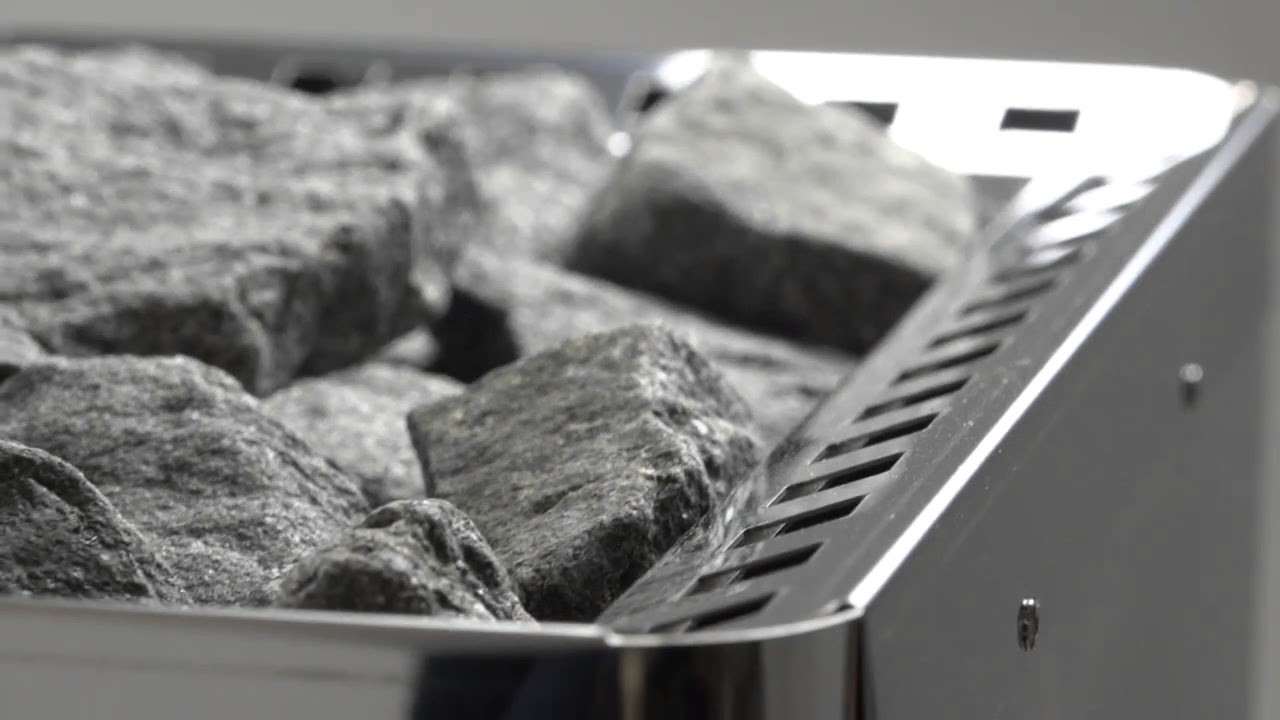
In electric heaters, stones are heated by electric heating elements placed in a tank for stones at small distances from each other. This ensures uniform heating of all stones. Smaller stones are used here - from 5 to 7 cm.
Stones placed in the heater must be thoroughly washed. Their placement in the heater is also very important for quality bathing. If you place the stones too densely, it is possible that you will not reach the desired temperature in the sauna, because the poorly moving air between the sauna stones will disturb the combustion processes of the heater. It is best to place the stones freely, neither too densely nor too sparsely, the pile of stones on the sauna heater should not be large either. Correctly placed stones in the sauna heater will ensure good air circulation and speed up the heating process of the sauna room.
The quality of sauna stones is very important for creating good steam and ensuring safe sauna sessions. Here’s why:
-
Heat retention and release – high-quality stones (e.g., gabbro-diabase) heat up slowly and release heat evenly. This results in steam that is gentler, more pleasant, and less “harsh.”
-
Heat resistance – poor-quality or unsuitable stones (for example, fieldstones with cracks, moisture, or organic impurities) can crack or even explode under high temperatures and water exposure. This poses a safety risk.
-
Steam quality – good stones produce fine, soft steam that spreads evenly throughout the room instead of burning the skin.
-
Durability – better stones last longer and don’t need to be replaced as often.
-
Hygiene – stones specifically intended for saunas contain no harmful impurities, preventing unpleasant odors or smoke.
In short, properly selected stones not only enhance the enjoyment of the sauna but also ensure safety.
It is recommended to change the sauna stones once a year, but if the sauna is for commercial use, then you should check them more often. It is not necessary to change all the stones when discarding them. Just take the stones out of the heater and clean the heater, check the stones for crumbling, if they are hard enough, wash them and put them back in the heater. Fill the missing amount of stones with new ones.
Types of stones recommended for the sauna - jadeite, soapstone, raspberry quartzite, white quartzite, ceramic stones, olivine diabase.
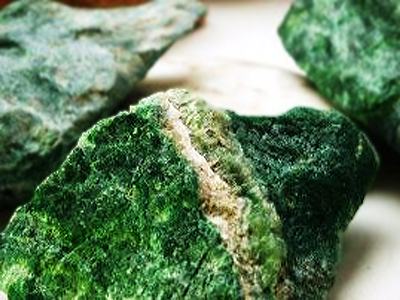 • Jadeite stone - a semi-precious stone that is particularly suitable for the sauna due to its physical and healing properties. The stone is strong enough, the corners are not sharp, not scaly, and has little water absorption. In the sauna, this stone provides light, gentle and fine steam. Its resources in the world are limited, it does not react with acids, it purifies the ambient air, it is extracted manually, there are no resources of this stone in Europe. The stone emits silicic acid (which has an analgesic, anti-toxic, anti-inflammatory effect), is extremely clean, and has an abundance of minerals necessary for the human body. It is said that due to its structural properties and chemical composition, jadeite also has healing properties - it strengthens the nervous system, normalizes arterial blood pressure, softens blood vessel walls, improves blood composition, strengthens male potency, kidney and ureter work.
• Jadeite stone - a semi-precious stone that is particularly suitable for the sauna due to its physical and healing properties. The stone is strong enough, the corners are not sharp, not scaly, and has little water absorption. In the sauna, this stone provides light, gentle and fine steam. Its resources in the world are limited, it does not react with acids, it purifies the ambient air, it is extracted manually, there are no resources of this stone in Europe. The stone emits silicic acid (which has an analgesic, anti-toxic, anti-inflammatory effect), is extremely clean, and has an abundance of minerals necessary for the human body. It is said that due to its structural properties and chemical composition, jadeite also has healing properties - it strengthens the nervous system, normalizes arterial blood pressure, softens blood vessel walls, improves blood composition, strengthens male potency, kidney and ureter work.
• Soapstone (talcochlorite) - a stone consisting of hard and soft minerals that easily lend themselves to processing. During the formation, the talc particles grew into magnesite, which is why they are connected by extremely strong bonds, thus forming a solid stone mass. Soapstone is resistant to high temperatures, has extremely good thermal conductivity and has unique properties of excellent heat accumulation, which is why it has been known since ancient times as a material that is perfect for the sauna. The steam from these stones is very similar to the steam produced by a jadeite stone.
• Raspberry quartzite - in other words - porphyry, thanks to its unique physical-mechanical properties, is the most durable stone used in all types of baths and saunas. Due to its high density and low thermal conductivity, raspberry quartzite emits gentle steam in the sauna. Raspberry quartzite is said to regulate blood pressure and relieve back pain.
• White quartzite - thanks to its high density and low thermal conductivity, it gives very light and good steam for a long time. It is very resistant to high temperatures and temperature changes, so it does not crumble for a very long time in sauna heaters. According to its chemical composition, it is almost pure quartz (up to 98%). White quartzite used in the sauna helps to clean the respiratory organs, enriches them with oxygen, and adds healthy energy to the human body.
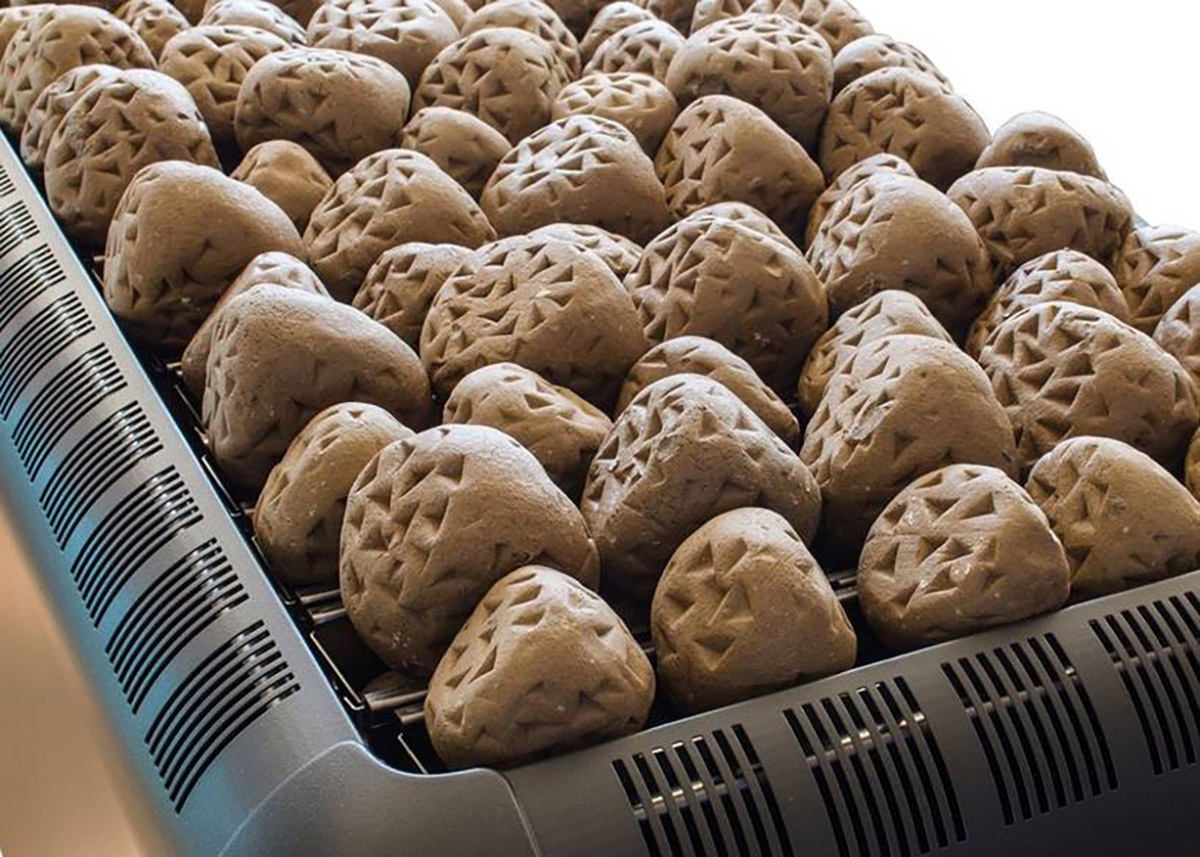
• Ceramic stones - made of clay, designed for electric heaters where there is dry and scarce steam. Due to their porous structure, ceramic heater stones can collect water, creating richer and softer steam. In addition, more water can be used to produce steam. Since the stones evaporate water well, the humidity level in the sauna remains high enough.
• Gabbro diabase is a black, non-porous, organic stone that does not emit any substances. It heats up very well and gives off heat quickly, does not take a long time to crack. Excavated in Karelia.
By choosing the right sauna stones, you can enjoy great steam and even heat in the sauna!

